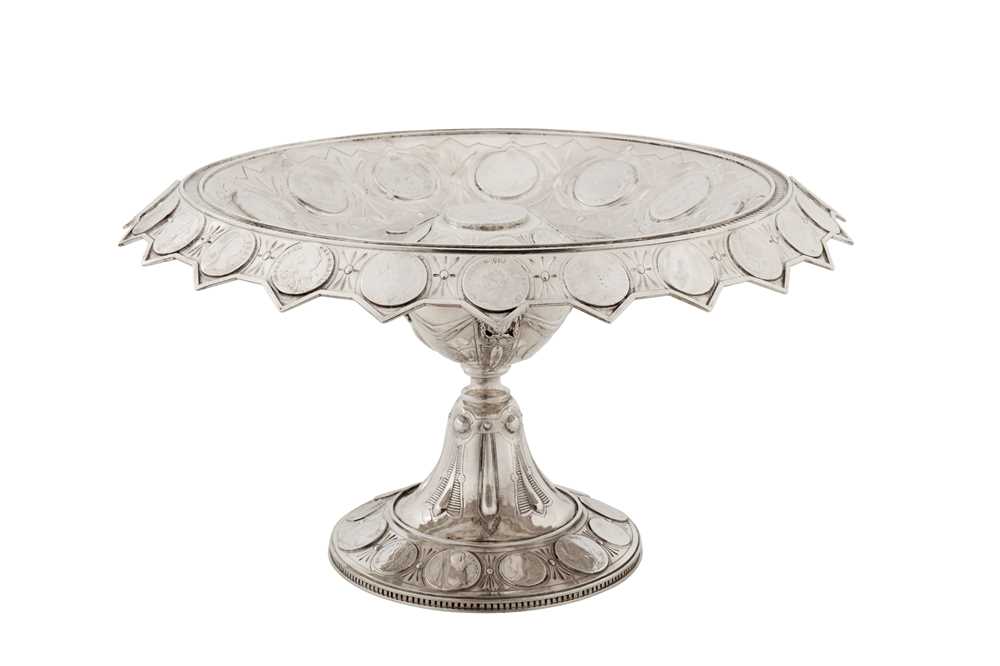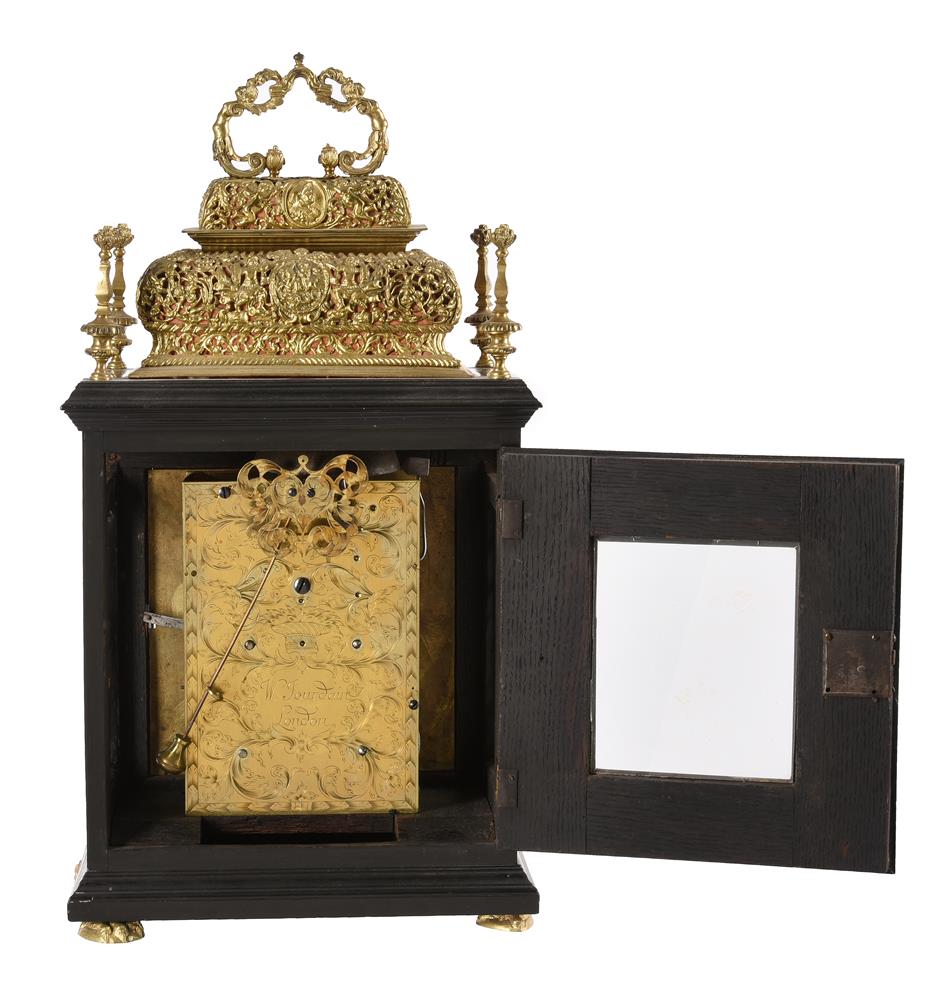An unusual William III ebony and Arabesque marquetry eight-day longcase clock, the movement and dial by John Wise, London, circa 1695-1700, the four finned pillar outside countwheel bell striking movement with 11.5 inch square brass dial with subsidiary seconds dial, scroll border engraved calendar aperture and ringed winding holes to the matted centre within applied silvered Roman numeral chapter ring with stylised sword hilt half hour markers, Arabic five minutes to outer track and signed John Wise, London to lower edge, the angles applied with gilt twin cherub and crown pattern spandrels, in a case with inlaid moulded cornice and foliate fretwork frieze above Arabesque marquetry decorated door applied with three-quarter columns to hood, the trunk with convex throat moulding decorated with symmetrical floral trails on an ebony ground above rectangular 41 inch door decorated in various timbers on an ebony ground with bird inhabited symmetrical stylised floral trails incorporating winged cherubs, dragons and scallop shell motifs around a central lenticle set within an octagonal foliate banded surround continuing to border the door panel within fascia similarly inlaid with repeating foliate designs, the sides veneered with ebony panels within triple line strung holly banded surrounds, on plinth base with floral marquetry top moulding and veneered with conforming symmetrical foliate scroll decoration incorporating stylised scallop shell spandrels, on cross grain walnut moulded skirt base, 205cm (80.5ins) high. John Wise senior is recorded in Loomes, Brian The early CLOCKMAKERS of Great Britain as born circa 1625 and apprenticed to Peter Closon through T. Dawson in 1638, gaining his freedom in October 1646. John Wise junior was born in 1658 (during his father's time in Warwick 1653-68) and was apprenticed to his father in 1667 gaining his freedom in 1683. It is probable that John junior worked alongside his father until latter's death in 1693, and continued the business until his demise in 1718. The case of current lot, although probably not original to the movement and dial, is highly unusual in that ebony is used both as a ground for the marquetry decoration and for the sides of the case. This coupled with the bold use of light timbers (holly?) as a broad border to the side panels results in a striking decorative identity through the interesting contrasts between these timbers.
An unusual William III ebony and Arabesque marquetry eight-day longcase clock, the movement and dial by John Wise, London, circa 1695-1700, the four finned pillar outside countwheel bell striking movement with 11.5 inch square brass dial with subsidiary seconds dial, scroll border engraved calendar aperture and ringed winding holes to the matted centre within applied silvered Roman numeral chapter ring with stylised sword hilt half hour markers, Arabic five minutes to outer track and signed John Wise, London to lower edge, the angles applied with gilt twin cherub and crown pattern spandrels, in a case with inlaid moulded cornice and foliate fretwork frieze above Arabesque marquetry decorated door applied with three-quarter columns to hood, the trunk with convex throat moulding decorated with symmetrical floral trails on an ebony ground above rectangular 41 inch door decorated in various timbers on an ebony ground with bird inhabited symmetrical stylised floral trails incorporating winged cherubs, dragons and scallop shell motifs around a central lenticle set within an octagonal foliate banded surround continuing to border the door panel within fascia similarly inlaid with repeating foliate designs, the sides veneered with ebony panels within triple line strung holly banded surrounds, on plinth base with floral marquetry top moulding and veneered with conforming symmetrical foliate scroll decoration incorporating stylised scallop shell spandrels, on cross grain walnut moulded skirt base, 205cm (80.5ins) high. John Wise senior is recorded in Loomes, Brian The early CLOCKMAKERS of Great Britain as born circa 1625 and apprenticed to Peter Closon through T. Dawson in 1638, gaining his freedom in October 1646. John Wise junior was born in 1658 (during his father's time in Warwick 1653-68) and was apprenticed to his father in 1667 gaining his freedom in 1683. It is probable that John junior worked alongside his father until latter's death in 1693, and continued the business until his demise in 1718. The case of current lot, although probably not original to the movement and dial, is highly unusual in that ebony is used both as a ground for the marquetry decoration and for the sides of the case. This coupled with the bold use of light timbers (holly?) as a broad border to the side panels results in a striking decorative identity through the interesting contrasts between these timbers.














Try LotSearch and its premium features for 7 days - without any costs!
Be notified automatically about new items in upcoming auctions.
Create an alert